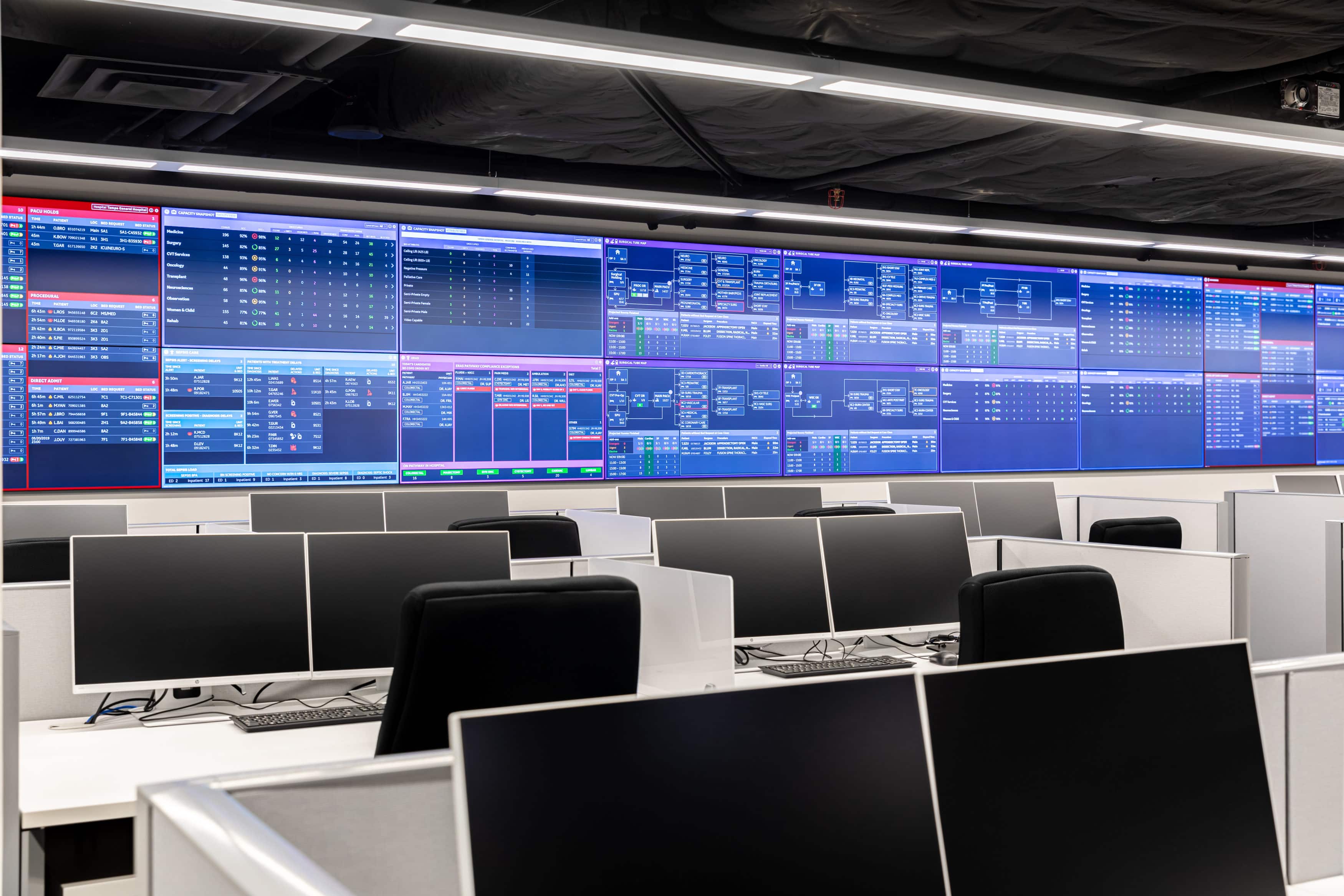
Less than one year after Tampa General Hospital began a journey to increase efficiencies and better serve its patients, the hospital has revealed $10 million in savings.
In August, Gov. Ron DeSantis joined Tampa General Hospital (TGH) to celebrate the official opening of CareComm, a NASA-style mission command center that utilizes data, predictive analytics and artificial intelligence to create efficiencies in hospital operations.
While the brand-new facility just opened, the technology had been operating on a more limited scale since last December. Now, less than one year later, TGH has reached a major milestone — $10 million — in savings.
“We aim to provide world class health care at a high quality and at a low cost for every single Floridian,” TGH President and CEO John Couris said. “We’re not going to fix health care by adding more buildings and more infrastructure. We have to do better with what we have. That’s what CareComm is about.”
CareComm at TGH is the fourth command center in the world and the first in Florida.
Through a partnership with GE, TGH’s CareComm uses predictive analytics and artificial intelligence to create efficiencies in hospital operations. The center consists of 38 wall-mounted LCD screens that display real-time data. Team members representing various divisions and services lines operate from workstations in the center. With the real-time data and the right team members on-hand, CareComm is able to trouble-shoot problems, reduce wait times and improve patient experiences.
“It’s not just about movement and flow through the hospital,” said Dr. Pete Chang, Vice President, Care Transitions & Chief Medical Informatics Officer at TGH. “It’s about providing that highest-quality, world-class care to make sure that our patients are getting identified earlier in the disease process … and getting that patient on a specific pathway that we know is evidence-based and results in a decreased mortality and a better outcome and experience.”
The increased efficiencies that come from CareComm have effectively reduced the length of stay for patients at the hospital. Since the technology was adopted, TGH has decreased average length of stay by nearly half a day per patient. When patients spend less time in the hospital, that reduces exposure to other health risks and, importantly, cuts the costs of their health care.
What’s more, TGH has decreased readmission rates by 5 percent and cut overall cost of admission to the system by $500. TGH is also in the top quartile in the country in overall patient satisfaction.
“Our vision is simple, it’s to be the safest and most innovative academic health system in the country, and we will achieve it,” Couris said.



